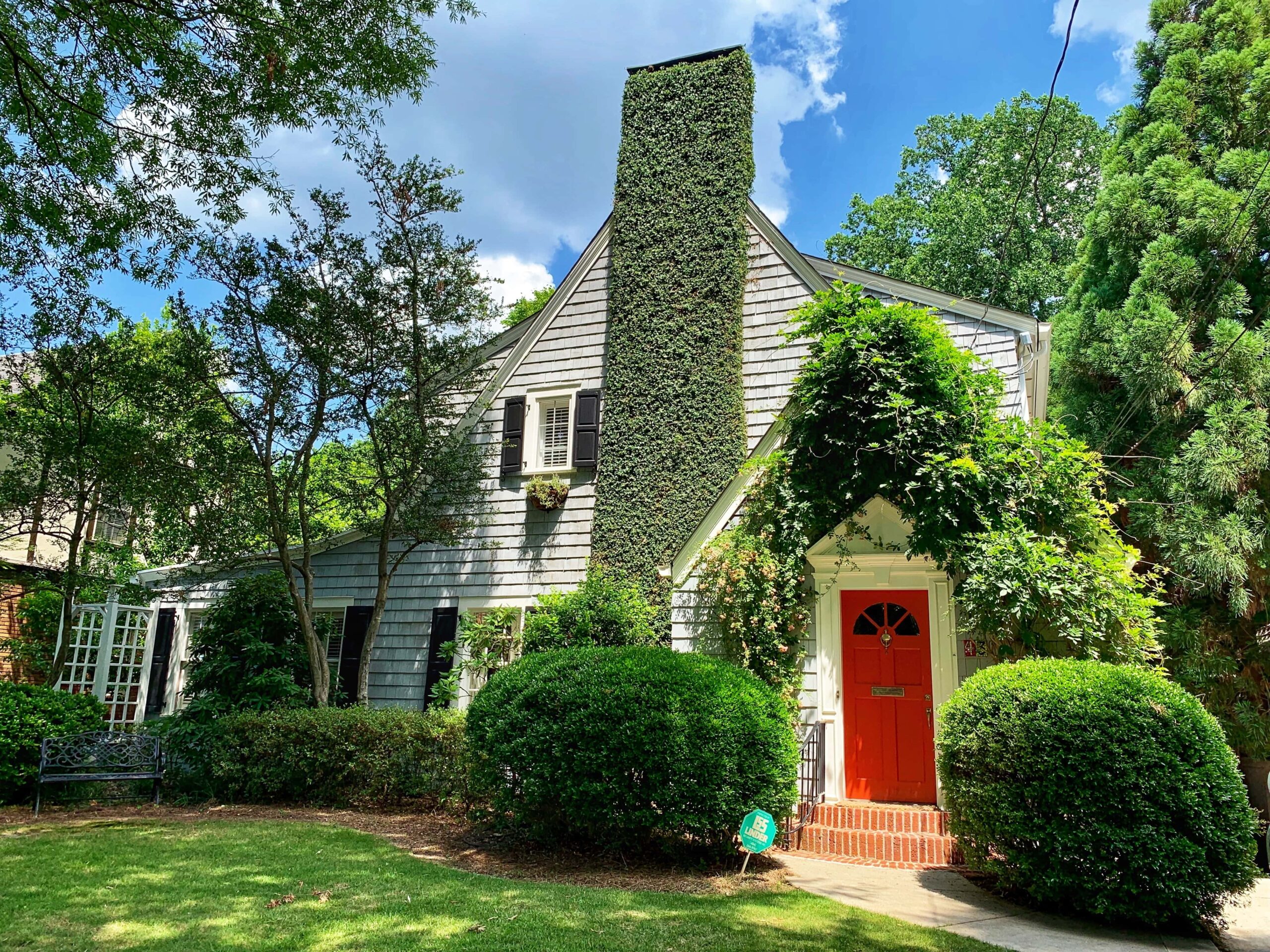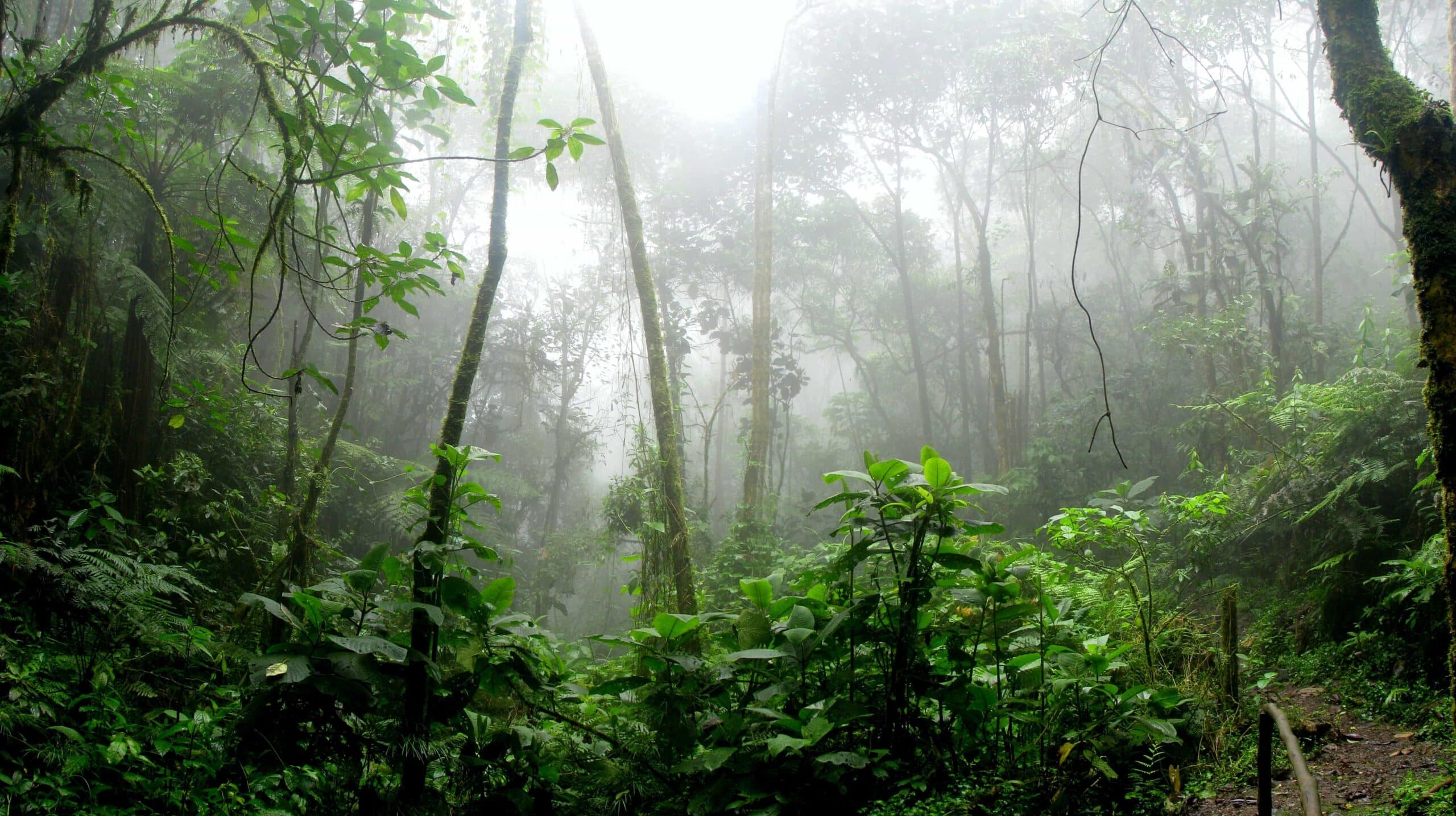
How to Mulch Around Your Trees
A common question we hear from homeowners is, “Should I put mulch around my trees?” The short answer is: yes – but within reason.
Concerns centered around whether or not putting mulch around a tree will kill it ought not lead a homeowner to avoid proper maintenance via mulching, as mulch provides many benefits to your trees, especially when they’re young.
These benefits include providing a weed barrier, insulating the root zone, reducing evaporation, and adding beneficial nutrients to the soil as it breaks down, which we will discuss in greater detail.

Mulch can be a great addition to your landscape, but there are a few things to consider before you dive in.
Mistakes to Avoid When Mulching Your Trees
Unfortunately, you don’t have to drive far to see examples of how not to mulch.
Many people assume that “mulching” is nothing more than tossing a load of wood chips at the base of the tree and while the application of mulch is pretty straightforward if it is done improperly it can actually harm your tree, rob nutrients from the soil, and draw water away from important areas.
One of the biggest mistakes homeowners make when mulching their trees is creating a “mulch volcano.” This is where the mulch pile starts out thin at the edges and then gradually increases until it reaches the base of the tree, creating a mound that resembles a volcano with a tree exploding out of the center.
This can be dangerous as rainfall and watering will naturally cause the mulch to become damp over time. Excess moisture in contact with the tree creates the perfect environment for decay and disease that can inhibit growth and possibly kill the tree.
Additionally, mulch piled too thickly can actually block oxygen and water from getting to the root zone (where it’s needed most) causing roots to grow upward and around the tree trunk in search of nutrients. Roots should not be growing into your mulch. If they are, it’s a sign your pile is too thick.
Also, make sure to avoid using plastic or fabric barriers underneath the mulch, as these hinder the soil from receiving the maximum benefits.
Benefits of Mulching
Think about it: mulching brings the forest home for your trees!
The forest floor is an ideal environment for tree health and vitality due to its ground cover, made up of all organic matter varieties, including twigs, leaves, rotting flowers, and other natural debris. Although it gives the environment a more unkempt appearance than we typically want for our residential lawns, these materials serve an important purpose in shielding the soil and tree roots and allowing for optimum tree growth.

The good news is that you do not have to recreate the same forest floor look at home, but you can give your trees those same nutrient-dense benefits by adding mulch to your landscape’s trees.
These are just some of the numerous benefits of bringing the forest home for your trees via mulching:
- Improves soil structure, aeration, water infiltration, and potency.
- Provides a barrier from yard tools such as lawnmowers, edgers, and trimmers.
- Avoids footstep or vehicle compaction.
- Prohibits the growth of weeds.
- Contains soil diseases and prevents their spread.
Without the same healthful environment found on the forest floor and recreated by mulch, tree soil is at risk of drying out, becoming overheated or cold, or unable to provide adequate nutrients.
What is the Best Type of Mulch?
Organic vs. Inorganic Mulch
There are many different types of mulch available, but organic mulch is the clear winner when it comes to soil nutrition.
The term organic mulch refers to anything natural, such as wood chips, bark, pine needles, hay, leaves, or compost. Organic mulch is more beneficial to trees than inorganic because as the organic mulch decomposes, it allows for soil microorganism growth in addition to the following benefits:
- Allows the soil to retain water and nutrients.
- Minimizes evaporation and soil erosion.
- Provides soil with temperature control during extreme weather conditions.
Contrarily, inorganic mulch is human-made. It often contains harsh chemicals that can negatively affect soil, and while it does provide some weed protection, it does not offer as many benefits as organic mulch.
How To Mulch Around Your Trees
Once you have chosen the mulch for your landscape, it is time to lay it down. Here are some best practices that we recommend to properly mulch around your trees:
- Prepare the surrounding area. Before applying your mulch, it is essential to ready the area, including removing weeds and debris from around the tree. Prune away any roots sticking out from the ground near the tree, which indicates a thirsty tree, and use a shovel to remove any grass or growth near the tree’s trunk.
- Never allow mulch to touch the trunk of the tree. Mulch should start about 2-3 inches from the base of the tree to avoid excess moisture buildup at your tree’s trunk.
- Mulch a 3-10 ft wide radius from the tree. Tree roots grow far and wide, ensure they’re covered by mulching at least 3 ft in all directions from the base of your tree. You will find this area easier to maintain if you remove grass and weeds before applying the mulch. Take care not to pile it up the tree trunk in a volcano pattern with heavy mulching layers at the bottom of the tree and thinning as it moves up the trunk. Instead, mulch should fan out to be an above ground cover for the tree’s entire root system.
- Mulch 2-4 in deep. As mentioned above, mulching too thickly can harm the growth of your tree but applying mulch too thinly can allow for the development of weeds that compete for the resources your tree needs and reduce insulation to its roots.
- Maintain your mulch. Over time mulch will settle and breakdown so it’s important to maintain your mulch on a regular basis. Add mulch in areas that have become too thin and pull back mulch that has come in contact with the tree’s base. When reapplying mulch be sure to use the same type that you used in your initial application to match color and consistency. It is important to remove weeds or unwanted growth as soon as you notice it, either by manual pruning or through herbicide. Mulch should also be raked and loosened occasionally to avoid compaction and your tree not receiving enough oxygen. Typically, the mulch should be replenished annually, but organic mulch may require replacement more frequently than inorganic types because it decays.

Courtesy of arborday.org
Get Your Mulch at Gaston Mulch and Soil
To bring the benefits of the forest floor home to your trees through effective mulching, rely on the advice and products from our expert team at Gaston Mulch and Soil. We offer bulk options to suit project needs of any size and delivery options available throughout Florida. Even better, all of our mulch is created from our Gaston’s Tree Debris Recycling processes, making mulching a greener process for our customers.
Contact us today so we can help you mulch your way to your healthiest trees yet!
